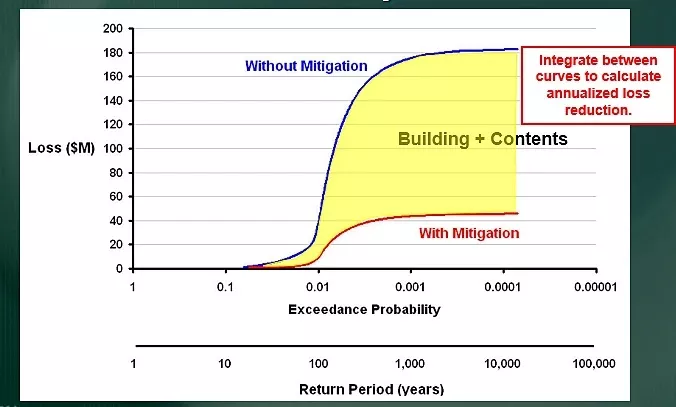July 2, 2019
The U.S. National Oceanic and Atmospheric Administration (NOAA) has estimated the losses from the top five costliest tropical cyclones on record at $500 billion. Three of those five cyclones occurred in the last 24 months. Experts predict that climate change will only compound the severity of future tropical cyclones and other extreme weather events.
As a result, it is increasingly important for owners and operators of process plants, manufacturing facilities, healthcare facilities, and other industrial enterprises to assess risk exposure and implement risk mitigation plans to minimize losses from weather-related infrastructure damage and business interruption.
Preparing for business interruption can be especially critical following a period of above-average losses, as underwriters reassess their exposures and transfer risk to business owners. For example, according to AON — a global professional services firm that provides a broad range of risk, reinsurance, retirement, and health services — following Hurricane Katrina, Gulf Coast operators with catastrophic exposure that experienced no losses in 2005 could expect a 20-35% increase in premiums in 2006, while operators with catastrophic exposure and losses could expect 50% increases. Deductibles would also increase from 2 to 5% with wind sub-limits of $150 million or less.
Business owners experienced similar increases in premiums and capped coverage in 2017 following Hurricane Harvey. Today, many entities that receive coverage for business interruption have policies that prevent coverage access for at least 30 days and cap coverage at 90 days. If not properly prepared, these policy limitations can pose a significant financial toll on a business operation following an extreme weather event.
Owners and operators of industrial enterprises can minimize tropical cyclone losses by understanding the probability of event occurrence during the planned operating life of a facility; adopting risk-based design practices that minimize infrastructure exposure; and conducting cost/benefit analyses to determine the resilience needed to maintain business operations.
Determining the Probability of Event Occurrence
Knowing the chances that a certain type of event (e.g., a 100-year event) will occur during the expected or planned operating life of a facility can be beneficial toward understanding the risk exposure to tropical cyclones and other extreme weather events.
For example, let us assume that the annual probability of a moderate Category 3 storm striking an existing facility located along the U.S. coastline is 1%, or 0.01 (i.e., a 100-year event), and that the facility is scheduled to operate for 30 more years. The probability is therefore 26%, or about 1 in 4, that the facility will experience a moderate Category 3 or greater storm in the next 30 years. When considering applicable design standards and associated factors of safety at the time of construction, such an event represents a reasonable threshold of major damage for many facilities.
Risk-Based Design Practices
In recognition of these levels of natural hazard exposures, many owners and operators of industrial enterprises are increasingly adopting the practice of risk-based design. Risk-based design acknowledges that some facility assets are more critical than others in terms of their overall contribution to enterprise operations. Examples include structures that contain control systems, have unique equipment, or pose a major hazard to life safety. Such critical facility assets require designs that are significantly stronger to provide a higher level of resiliency when exposed to a tropical cyclone event.
Risk Mitigation Planning
Owners and operators of industrial enterprises may take the following steps to determine the best approach for implementing a risk mitigation plan. First, determine the occurrence probability for the event. For example, in the case of extreme wind exposures, the gust wind is determined as a function of exceedance probability.
Next, determine the level of damage associated with a given wind speed. This determination may require separating the components of a facility into categories of structures and equipment and determining the associated vulnerabilities based on historical experience, published data, or engineering analyses.
Third, create a loss hazard curve showing the level of damage as a function of exceedance probability for an associated wind speed.
Fourth, identify mitigation options for the categories of structures and equipment (where deemed reasonable), the associated cost for each option, and the resulting reduction in estimated loss.
Fifth, create another hazard loss curve showing the reduced level of damage given the implementation of mitigation measures as a function of exceedance probability.
Finally, integrate the two loss curves (i.e., calculate the area underneath each curve) and subtract the two values to get an estimate of the expected annual loss reduction. Once this value is known, a determination can be made about the economic feasibility of the proposed mitigation measures by considering the operating life, desired benefit/cost ratio, and assumed discount rate. A visual example of this process is included below.

Accounting for Loss of Power
Arguably the most important factor to consider when assessing risk exposures is loss of power. Extended power outages can result in business interruption losses that well exceed building and content losses. Many business owners and operators fail to account for loss of power in their risk mitigation planning. It is important for owners to understand the nature of their operation and the corresponding exposures of electro-mechanical systems and the power required to sustain them. Important questions to ask include: Where do they get their power? How reliable is it? How quickly can it resume if impacted? How long will it last? Is an alternative power supply available?
Exponent partners with clients to perform risk mitigation assessments associated with tropical storm events. Such partnerships help clients demonstrate the return on investment associated with flood mitigation measures, opening protection, and emergency power upgrades that would be deployed during a tropical storm. Our team of experts works with clients to prepare hazard mitigation plans and conduct cost/benefit analyses.
How Exponent Can Help
Exponent's multidisciplinary team of engineers, statisticians, and scientists are experts in helping business owners and operators mitigate risk associated with natural hazards. For more information, read "Lessons Learned and Mitigation Options for Hurricanes," published by the American Institute of Chemical Engineers.
